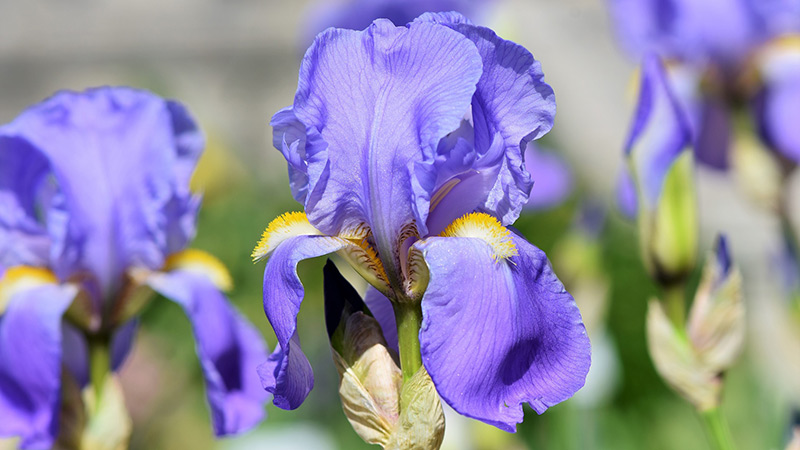Plant irises to brighten your garden

By MARILYN MCKINLEY
OSU master gardener volunteer
CANFIELD
Being of a certain age, I am a fan of old-fashioned flowers. Iris certainly falls into that category. The word iris comes from the Greek word for rainbow.
Iris comes in just about every color, save bright red. I am a fan of tall “bearded” and dwarf varieties of all colors.
Irises are not fussy and easy to grow. They like sun. Sun keeps the rhizomes dry, and they prefer soil to be around a pH of 7.0. They requires good drainage and low-nitrogen fertilizer.
One of the biggest mistakes people make when planting is to plant too deep. The rhizomes (fleshy part of the root) should be exposed above soil. Therefore, planting roots about 2 inches deep is sufficient. I don’t recall needing to water my Iris. They do like room to breath and require good air circulation. Plant about 18 inches apart, less space for dwarf varieties.
Do not mulch. Mulch retains moisture, causing root rot on these beauties. Break off the seed pods that form after blooms have faded.
In the fall, prune back the foliage. This will prevent chances of overwintering and pests or disease. Divide clumps every three to five years or more often after they are well-established. While not invasive, the clumps can grow rapidly in good soil conditions. Don’t forget to share with your gardening friends.
The Iris borer is the most common problem for these flowers. It can attack any type of Iris. Moths lay their eggs in late summer. The eggs overwinter and emerge as tiny caterpillars that tunnel into new foliage.
It is hard to recognize unless you know what to look for. The tips of foliage turn yellow and then start to die. The base of the stalk becomes yellowish – brown, mushy and smelly. If you dig Iris to move them, you will likely see holes in the rhizomes as well. How does this affect the Iris? Sometimes it doesn’t. Most likely they will bloom less and then die.
So, what do you do? Check your flowers for borer tunneling in late April and early May. Squash the ¼-inch long larvae. Prune off and remove any suspected foliage. Hopefully, the tiny caterpillar is trapped inside the removed foliage.
In summer, watch for damage and remove/destroy any infected rhizomes. The best way to prevent the problem is tidiness. No leftover foliage in fall. That reduces the chance for the borer to hide eggs and thus reduce the risk for the next season.
Dividing is easy. It is best done in the fall by using a garden fork so not to chop into the rhizomes. Break apart the rhizomes. A good rhizome is about the size of your thumb, has healthy roots and one or two fan leaves. Rinse and let dry, inspect the rhizomes, cut the leaves to about 5 inches. You are now ready to plant. Fan out the roots and follow directions for placing in soil as mentioned above.
To read more about growing Iris and care, go to http://go.osu.edu/iris.
 43
43
